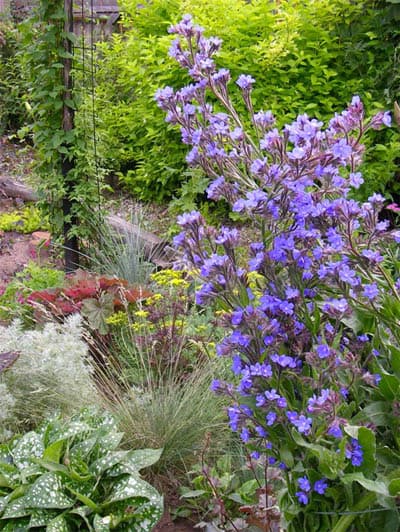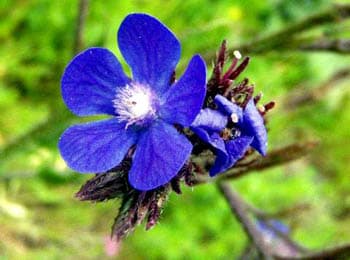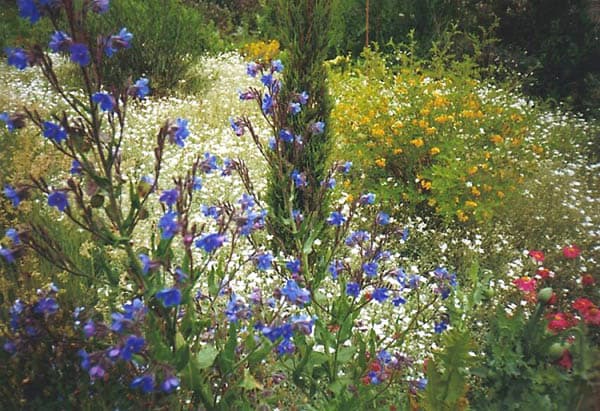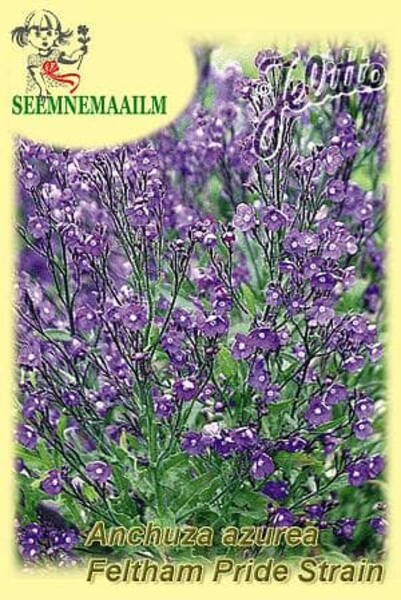Real gentian blue color of inflorescences!
Compact growth with good habit.
Short-lived perennial with moderate self-seeding. Looks good in natural style gardens. Does not require complex care. Attractive to butterflies, bees and other pollinators.
Flowering: the second year after sowing.
Flowering period: May - September.
Flowering plant height: up to 90 cm.
Distance between plants: 20 cm.
Climatic growing zones: Z3 - Z10.
In 1 g up to 50 seeds.
Location: requires open, sunny locations.
Soil: prefers loamy or sandy loamy, permeable soils rich in humus, moisture-loving. Winters without shelter.
Reproduction: dividing the bush and seeds that germinate in 12-14 days. Sowing is carried out in open ground seed beds in spring or autumn.
Use: in group plantings and mixborders. It is especially good next to daffodils and primroses, against the background of conifers. Good honey plant.


Family: Boraginaceae.
Origin: Mediterranean areas from Portugal and east to the Caucasus.
Special Features: A shorter, more compact version than the species, with very stable characteristics.
History: The species has been used medicinally and horticulturally, for hundreds of years. The pigment, found in the roots, has been used as a dye and also in treatment for wounds.
Colour: Innumerable brilliant gentian-blue flowers, up to 2 cm.
Natural Flowering Period: May - September.
Winter Hardiness: Z3.
Growth Habit: Compact, widely branching flowering stems.
Foliage: Early deadhanging after flowering forces the plant to re-produce the lanceolate leaves and that promotes better long-term durability.
Height with Flower: 90 cm.
Spacing between Plants: 40 cm.
Soil Requirement: well drained soils, pH 5.8 - 6.8.
Location: full sun.
Use: Plant together with Knautia, Salvia
Specialities: early deadheading after flowering encourages reblooming in September. Good container perennial. Better over-wintering than the species.
Cultural Tips:
Grams per 1000 seeds: 25.
Seed Requirement: 50 g / 1000 plants.
Best Sowing Date: Anytime.
Way of Germination: Fast Germinator.
Germination: These seeds must be covered with a layer seed kernel diameter. Keep daytime temperatures at approximately +20°C, and keep the moisture constant. The seeds must be kept in the light and moderately warm after germination.
Germination to Transplant: 2 - 4 weeks.
Transplanting to salable Plant: 6 - 10 weeks.
Fertilization: Low.

Italian bugloss, garden ancusa, Italian alkanet. Bot.syn.: Anchusa italica.












